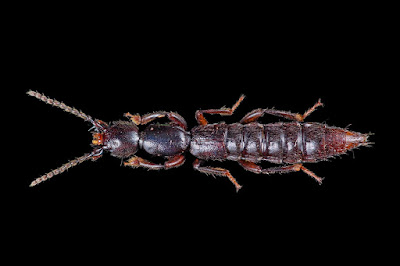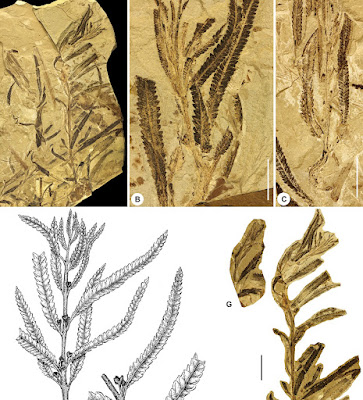 |
| Lathrobium neostygium Senda, 2023
|
Abstract
A new troglobiontic species, Lathrobium neostygium sp.n. (Coleoptera: Staphylinidae: Paederinae), is described from Gifu Prefecture, central Honshu, Japan. Photographs of the male and female habitus, of the aedeagus and of the type locality are provided. This finding represents the easternmost record of a Japanese troglobiontic species of Lathrobium GRAVENHORST, 1802. The L. nomurai species group is redefined, and a checklist of the species of this group is provided.
Key words: Coleoptera, Staphylinidae, Paederinae, Lathrobium, subterranean biodiversity, East Asia, Japan, endemic species, new species, taxonomy
 |
Lathrobium neostygium:
A–B) habitus of A) male, holotype and B) female, paratype, C) abdominal ventrites of male, showing secondary sexual characters, D) type locality.
Scales: A–B: 5.0 mm, C: 2.0 mm. Photographs by Y. Senda (A–C) and K. Kawamura (D). |
Lathrobium neostygium sp. n.
DIAGNOSIS: The new species is similar to Lathrobium tanakai described from Kii Peninsula (WATANABE 1998) in external and aedeagal features, but differs from it in the following characteristics: 1) lateral sides of the posterior excision asymmetrically produced in the caudal margin of male abdominal ventrite VIII (feebly and symmetrically produced in L. tanakai); 2) apical projection of aedeagal dorsal sclerite comparatively robust, with rounded apex (slender, with pointed apex in L. tanakai); 3) apical projection of paramere distinctly curved dorsad at about 1/5 (slightly curved dorsad at about 1/6 in L. tanakai).
ETYMOLOGY: The epithet is a combination of the traditional Japanese geographical name “Neo” (an area in the western part of Gifu Prefecture, where the new species was collected) and the Latin adjective “stygius” (stygian, being part of the underworld). The name is used as an adjective.
Yoshihiro Senda. 2023. Lathrobium neostygium, A New troglobiontic Rove Beetle from central Honshu, Japan (Coleoptera: Staphylinidae: Paederinae) – Koleopterologische Rundschau – 93_2023: 189 - 197.








































